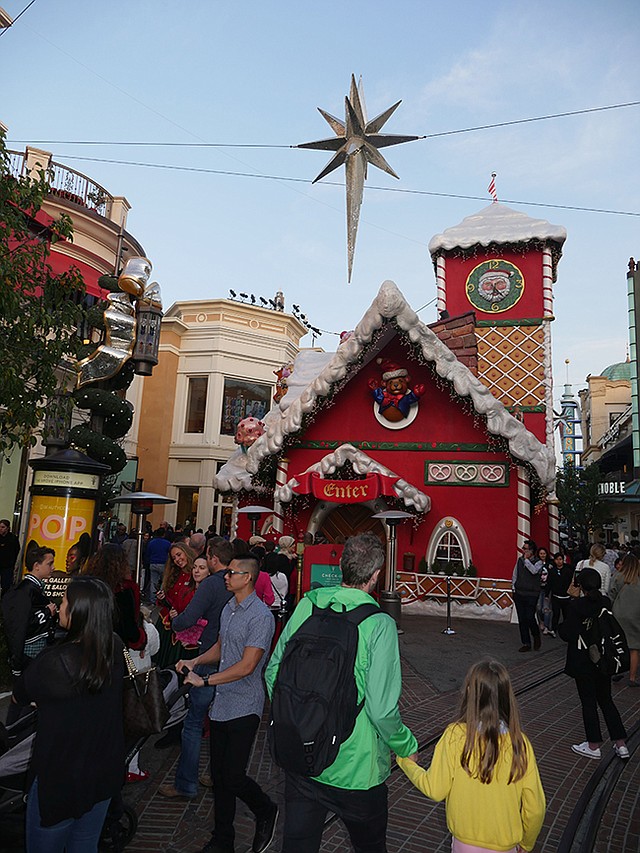A Strong Holiday Shopping Season Rings In Change
Holiday-Shopping Wrap-up
As of Wednesday, January 2, 2019
Twas the season for change.
Sales for the 2018 holiday season were the strongest they have been in the past six years, rising 5.1 percent over last year’s holiday sales and totaling $850 billion, according to Mastercard SpendingPulse, a research division for Mastercard.
And it was a good season for apparel, with clothing purchases jumping 7.9 percent over last year.
But this robust shopping season also was marked by adjustments. Digital shopping skyrocketed 19.1 percent compared with last year, according to Mastercard SpendingPulse.
Retail analysts observed that the increase came at the expense of retail traffic at bricks-and-mortar shops, said Jeffrey Van Sinderen of investment-services firm B. Riley FBR.
“There was a deep decline in traffic,” Van Sinderen said of bricks-and-mortar stores. “I felt it drove some folks to push promotions more forcefully.
Promotions were so generous they looked like post-holiday clearance sales with many mall retailers offering discounts as high as 50 percent to 60 percent off everything in the store, Van Sinderen said.
Those retailers offering omni-channel services, such as buy online and pick up at a store, enjoyed a robust season, Van Sinderen said. Retailers who didn’t bring full omni-channel offerings to the market stumbled.
This season, the “it” item seemed to have been time, said Britt Beemer, founder of America’s Research Group. He has been investigating American consumers’ shopping habits since the Reagan administration.
“Who saves me the most time gets the most spending,” Beemer said. He projected that consumers spent 12 percent to 14 percent more at digital and omni-channel retailers than those retailers who were not as efficient.
There also were no items that specifically drove spending during the holiday. The category of winter gloves enjoyed an uptick during the holiday season, Beemer estimated. Spending on luxury fashion and gifts also increased.
The 2018 season started with strong forecasts built on a bullish economy. The National Retail Federation predicted sales for the 2018 holiday season would rise by 4.3 percent to 4.8 percent over last year. The NRF will release its final holiday sales numbers on Jan. 16.
As the holiday season started, consumer confidence was high, according to The Conference Board, a nonprofit research group studying consumer moods. The national unemployment rate, at a very low 3.7 percent throughout the holiday season, meant shoppers were ready to spend.
The calendar also helped ensure the season’s success. This year, there were five weekends before Christmas instead of the usual four weekends, providing ample opportunity to find that special gift.
And this holiday’s shopping pace was similar to past years. It started off with a bang on the Black Friday weekend after Thanksgiving, the traditional start of the shopping season, with more than 165 million Americans shopping online or in stores.
Retail traffic decreased until 10 days before Christmas. The International Council of Shopping Centers found that 44 percent of Americans, or 111 million people, intended to shop on Super Saturday, the Saturday before Christmas. The ICSC’s survey found that Super Saturday shoppers intended to spend an average of $173.10 on gifts that day.
However, political and macroeconomic concerns cast some clouds over the otherwise sunny holiday outlook and the future, said Ron Friedman, the partner in charge of retail and consumer products for Marcum LLP, an accounting firm with offices in Los Angeles. “I forecasted that this year was going to be a great year for retail,” Friedman said. “Unfortunately, I’m not as optimistic about next year. We have major concerns and hurdles to get over. There is uncertainty about tariffs with China. There is volatility with the stock market. The Federal Reserve’s potential increase in [interest] rates could slow down growth.”
While the stock market seemed to be manic during the entire holiday season, retail stocks led a market rally on Dec. 26, said Paul Zaffaroni, a managing director for Roth Capital Partners. “There seemed to be a disconnect between the stock market and consumer spending,” Zaffaroni said. “The consumer felt good and was spending a lot of money. But stocks were all over the place. With the bounce back today, the market may be starting to realize that consumers will still be driving the market.”
